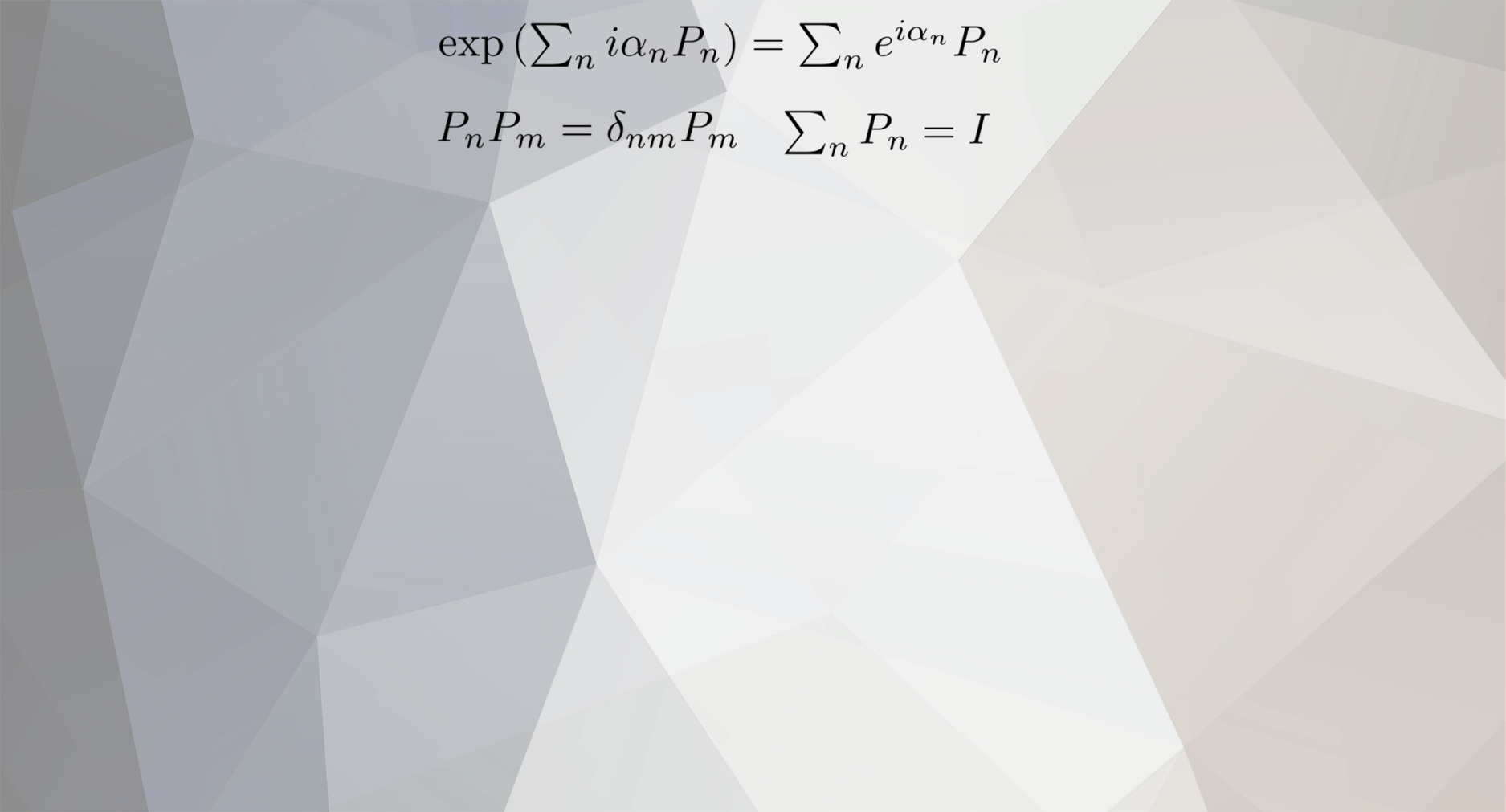-
Posts
4765 -
Joined
-
Days Won
54
Content Type
Profiles
Forums
Events
Everything posted by joigus
-
As @KJW said, the aliquot sum: of any prime number is 1, so no prime number can be perfect. Example: 6=1+2+3=1*2*3
-
What do you mean by a distance becoming "reachable"? In the sense of being able to probe it? In the sense of making it fit through some kind of physical system in the perpendicular direction playing the role of a slit (like a couple of high-energy photons, etc...)? Or perhaps in the purely kinematical sense of it being proven that short by means of telemetry of some kind?
-
Ahem... no atheist in their right mind...? Be honest when quoting me, please. Of course atheists can do horrible things, but not out of belief. Viral ideas can be lethal. Religion is but one example of a viral idea with no logic or evidence to substanciate it. Religion can make an otherwise perfectly functional mind do horrible things. That was my point. Disfunctional minds can do what we all know they can do. Of course. Don't be disingenuous.
-
Tens[?], hundreds[?], of thousands of Tlaxcaltecs who were sacrificed by Aztec devotees every year would disagree with that. No atheist in their right mind would extract the beating heart of a living innocent person from their body. A religious person might. For those Aztecs, killing thousands of people as a sacrifice to their gods was totally moral. That's what god-fearing people can do.
-

Logical Vacuum Genesis 2
joigus replied to Anders Agerbo Andersen's topic in Modern and Theoretical Physics
I wholeheartedly agree. -

Logical Vacuum Genesis 2
joigus replied to Anders Agerbo Andersen's topic in Modern and Theoretical Physics
The concept of "nothing" is but a phantom, I think. If quantum physics has taught us anything for export in the philosophical realm, I think these two nuggets are the most interesting ones: 1) "Identity" is an illusion. 2) "Nothing" is an illusion -
I agree 100%. I don't consider this a serious proposal.
-

Principle of Causality and Inertial Frames of Reference
joigus replied to andsm's topic in Speculations
As said, no way in hell that photons can "look like" muons in another frame of reference. This is incompatible with conservation of charge and covariance of 4-momentum to mention but the most outrageous. Repeat: No way in hell. Maybe in parallel hells, as @KJW suggests. Very good points. Photons lead long lives; gluons live cryptic ones. And muons, blink and you missed them. -
I'm not saying that you are against GR. Sorry if it came across that way. Let me be a tad clearer about what I said. Some of these effects you could simulate with a linear theory. Eg, you could simulate the precession of Mercury's perihelion by assuming that, instead of the 1/r law for the potential, you had a 1/r1+something law. This has been tried, and has failed. Also, perturbations with another object which simply is not there. The thing is you cannot concoct a spherically-symmetric field equation as simple as Poisson's field equation for gravity that gives you solutions differing from 1/r law. You simply cannot. Einstein already observed this. Analogously, you could perhaps concoct a modification of Newton's gravity (and the corresponding generalised Poisson field equation) that gave you all the other effects, like Lense-Thirring, gravitational lensing, etc. So the best explanation we have for all these effects is that the equations are non-linear. A Taylor expansion g=η+h as Mordred has suggested will give you a host of first-order corrections that will do the job.
-
Sorry. @MigL beat me to the punch, although I had read your comment. I was pre-configuring the answer in my mind as something like "degeneracy pressure is more of a statistical consequence (of general principles of quantum mechanics) rather than an actual interaction". (Something like that.) But MigL's answer is actually much better.
-
All of them? Deviations of trajectories at intense field values explained Prediction of black holes confirmed Lense-Thirring effect Gravitational time dilation confirmed Gravitational waves confirmed Gravitational lensing confirmed etc. All of those are consequences of the non-linear structure of GR. Arguably BH's can be sensibly talked about with a linear theory (Laplace). Gravity is not renormalisable. I don't understand. Why do you need a limit in order to adds things up? Maybe you're referring to a continuous spectrum? Easier said than done.
-
"Gravity gravitates" does not lead to circular thinking, as far as I know. It only means the equations for the gravity field are non-linear in the gravity field. So the gravity field couples to itself. Gluons "gluate" too, if you will. The equations become incredibly more difficult to solve, because gluons couple to themselves. But no logical circularity. True. I think @MJ kihara is mixing up "normalisation" with "renormalisation", which are two very different things. Normalisation is about probabilities adding up to one. Renormalisation is about some observables growing arbitrarily large when other observables grow arbitrarily large (or small), so you must declare a cutoff for the actual laboratory condition. So it's about asymptotics of observables. Those are different things.
-
Oh, yes. You mean those hundreds of atheists who plague Christian social networks trying to break people's faith. Atheists probably invented the word "agnostic" just to be left alone by religious types. The way it goes is not atheism misleads you into a flawed interpretation of evolution. Rather, understanding evolution makes it very hard to hold any belief in a personal god. It makes the idea extremely unlikely. As many who argue in a similar way, you totally misunderstand "random". Deserts and jungles are very stable for millenia (non-random as compared to, eg, the life-cycle of lizards). If environmental conditions varied very wildly every hour, there would be no room for evolution. It requires something slow (non-random enough, if you will) for there to be the chance for the adaptive system to actually adapt. The adaptive system cannot be "too random" either. It must allow for some part of the configuration space for random variation, while being very conservative with the part of it that's worked well (which is most of it).
-
"Imaginary" in mathematics does not mean "external to reality". It's part of an algebraic extension of the other numbers. It makes perfect sense and it is used to describe "reality" in the usual sense. The impedance of a circuit has an "imaginary" part, for example. The absorption coefficient of an optical medium can be understood as the imaginary part of its refraction index. Imaginary numbers appear in quantum mechanics too. Special relativity can be understood as velocities being imaginary angles... So nothing "unreal" about it.
-
Ok. I withdraw the word "oxymoron", which is the one I used. I can say though that "sub-quantum" doesn't seem to mean anything precise here. Same goes for "flux", or "echo", or "resonance", etc. I see nothing flowing, echoing, or resonating in this "theory". If anything, it reminds me (in that sense "resonates") of other quasi-literary attempts to introduce a suggestive vocabulary. Nothing more. As Swanson implied, no predictions, no evidence, nothing much to say scientifically speaking.
-
I see. Thank you. I agree with Studiot that a rotation does not necessarily imply a radius, btw. Usually, it implies an angle and a point (centre of rotation), as far as I know.
-
I'm all ears for things forbidden. Imaginary angles?
-
You can highlight the piece of text you want to respond to. Like this, By clicking on "Quote selection". Or you can quote the whole comment. Like this,
-
Indeed. Then you envision the wrong thing, as infinity has no inverse while rotations always have an inverse (they are elements of a group). Aristotle already integrated physics with logic. He did the wrong kind of physics, but physics has never abandoned Aristotelian categories, and logic. Quantum mechanics even has an underlying logic that generalises binary logic in some sense. Buy physics has never been alien to logic. It's been an integral part of the structure since its inception. One could argue that humans have always implicitly used logic.
-
Thanks for pointing this out. I asked a question that was never answered. What makes one guy become a victim of shootings and bombing, or your pants exploding, and the other the fortunate owner of a convenience store in Ramallah? I must plead ignorance here. Let's hear the answers. This is a very good point. Has he taken advantage of the radicalisation of a big part of Israeli society? It is possible. It's hard to believe that he allowed October 7 to happen while being keenly aware of the dimensions of the upcoming slaughter. Maybe he didn't think it was going to be as big as it was. Maybe he miscalculated. Or maybe he's been a filthy Jewish supremacist since the get go. Maybe his only concern is holding on to power and he doesn't care how many lives are spent. I don't know. It doesn't seem likely to me, but it's not impossible. I think it's more likely that he's increasingly been driven to do deals with that particular devil. I think it's possible that you're doomed to become devilish when rockets rain upon you for decades, when you are eagerly awaiting for the Olympics to start and you have to see your whole National team get slaughtered, when your brother's life has been taken when trying to rescue innocent civilians taken as hostages in Entebbe, etc. It might influence your views, I'm just saying. A Spanish politician (Manuel Fraga) once said that politics makes very strange bed partners. Some people say it may have been Winston Churchill who first said it. In any case, that's what might be going on here. The law of unintended consequences infiltrates all of this, IMO, and it's all too easy to demonise one part while lifting responsibility from the other. We just love binary logic.
-
Exactly. So we've narrowed it down to "who is playing Johnny's mum or dad here?"
-
Being inclined is a relative term. The Rarámuri call themselves "the people who walk straight". I suppose to them everybody else is tilted.



